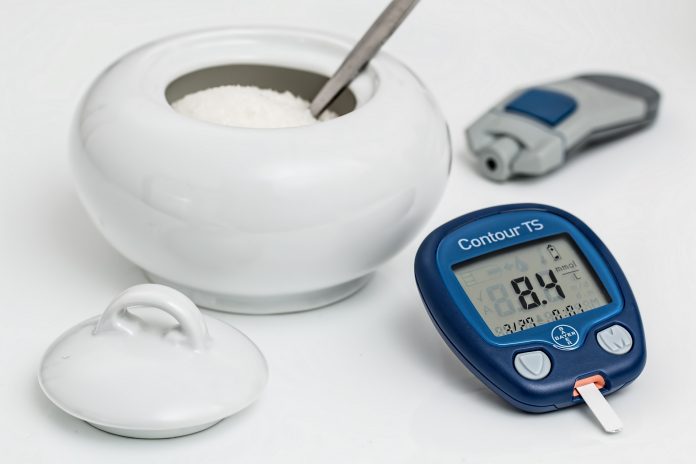In recent years, the prevalence of type 2 diabetes mellitus (T2DM) has been alarming. The World Health Organization predicts a diabetes surge of 39% between 2000 and 2030, or an estimated 366 million people being affected.1 With diabetes, cardiovascular risks add to the complexity and need for interventions. The question at hand is the effectiveness of drugs versus lifestyle interventions for good health outcomes in those with diabetes.
What is type 2 diabetes mellitus?
Type 2 diabetes mellitus is a chronic disorder characterized by faulty glucose metabolism. This dysfunction affects the body’s ability to convert sugar into usable energy; instead the sugar runs rampant in the blood.3
The uncontrolled blood sugar leads to cell and tissue communication problems throughout the body. For example, miscommunication can be when a hormone, like insulin, is given the wrong signals. These incorrect signals can lead to over or underproduction of the hormone and its effects.
Other signals are affected when cell and tissue communication is defective, causing collateral health concerns. Patients with T2DM often live with or have a greater risk for cardiovascular disease, obesity, kidney disease, and more. 2,3
Diabetes interventions
A study was done involving assessments of the effectiveness of different interventions of a Diabetes Prevention Program (DPP) to address T2DM prevalence. The DPP clinical trial determined whether pharmacological therapy or lifestyle intervention would prevent the delay of diabetes.
Individuals were randomly assigned to one of three protocols. These protocols were closely monitored for their effectiveness in reducing heart complication risks in those with diabetes.
The first protocol involved a twice-daily ingestion of 850 mg of Metformin. Metformin is a drug used for diabetes management, with its primary and secondary roles of improving insulin sensitivity and decreasing insulin resistance.4
The effects of Metformin are also beneficial in reducing the risk of heart attacks and other cardiovascular diseases.2
With a strong association between weight and a high body mass index (BMI) and risk of T2DM, the second tactic was to address these variables.5 The second protocol was a lifestyle intervention with DPP participants aiming for a 7% weight loss and a weekly minimum of 150 minutes of physical activity.
The third intervention implemented in the study was using a placebo instead of Metformin.
Results of the study
The study characterization was the follow-up measurements of the DPP participants. There were also favourable results. Diabetes symptoms reduction was seen in 58% of those using lifestyle intervention and 31% in the group using Metformin.
There was no indication of risk reduction in participants with the placebo drug.2 However, upon follow-up and in comparison to the placebo group, the active interventions were positive in reducing cardiovascular risk factors.2
Limitations and flaws of the study
Identification of many limitations were found with this 21-year study. The first limitation was the impact reduction of the interventions over time.
This impact reduction was because of a diminishing intensity of lifestyle interventions. This diminishing intensity means individuals did not continue their 150 minutes of physical activity.
Another flaw was the use of weight loss and BMI for assessing complications with diabetes. Unfortunately, BMI and weight loss do not consider muscle-to-fat ratios, which is an important measure in diabetes research.
BMI and weight loss do not reflect changes that occur with age, nor account for the body fat distribution differences between men and women.6 Using BMI as a primary measurement for obesity can greatly misclassify the problems and risks associated with obesity and diabetes.
An additional flaw in the study was the increased tolerance to Metformin. With growing tolerance, there is a requirement for higher dosages over time.2
Conclusions
There is an alarming worldwide increase in T2DM and the disease’s additive health complications. Diabetes research needs to prioritize prevention strategies for at-risk individuals.
References
- Roumen, C., Blaak, E. E., & Corpeleijn, E. (2009). Lifestyle intervention for prevention of diabetes: Determinants of success for future implementation. Nutrition Reviews, 67(3), 132–146. https://doi.org/10.1111/j.1753-4887.2009.00181.x
- Goldberg, R. B., Orchard, T. J., Crandall, J. P., Boyko, E. J., Budoff, M., Dabelea, D., Gadde, K. M., Knowler, W. C., Lee, C. G., Nathan, D. M., Watson, K., & Temprosa, M. (2022). Effects of long-term Metformin and lifestyle interventions on cardiovascular events in the diabetes prevention program and its outcome study. Circulation, 145(22), 1632–1641. https://doi.org/10.1161/circulationaha.121.056756
- Kuzuya, T., & Matsuda, A. (1997). Classification of diabetes on the basis of etiologies versus degree of insulin deficiency. Diabetes Care, 20(2), 219–220. https://doi.org/10.2337/diacare.20.2.219
- Bailey, C. J., & Turner, R. C. (1996). Metformin. New England Journal of Medicine, 334(9), 574–579. https://doi.org/10.1056/nejm199602293340906
- Gray, N., Picone, G., Sloan, F., & Yashkin, A. (2015). Relation between BMI and diabetes mellitus and its complications among us older adults. Southern Medical Journal, 108(1), 29–36. https://doi.org/10.14423/smj.0000000000000214
- Rothman, K. J. (2008). BMI-related errors in the measurement of obesity. International Journal of Obesity, 32(S3). https://doi.org/10.1038/ijo.2008.87



